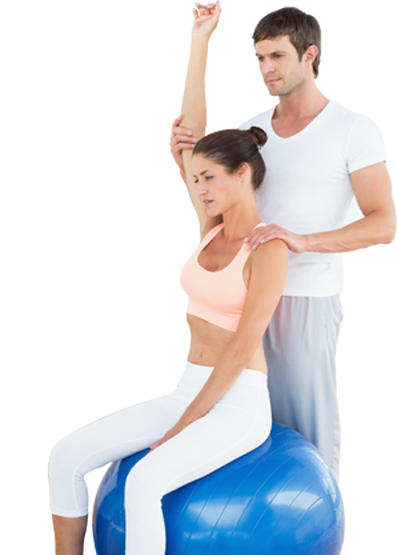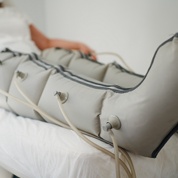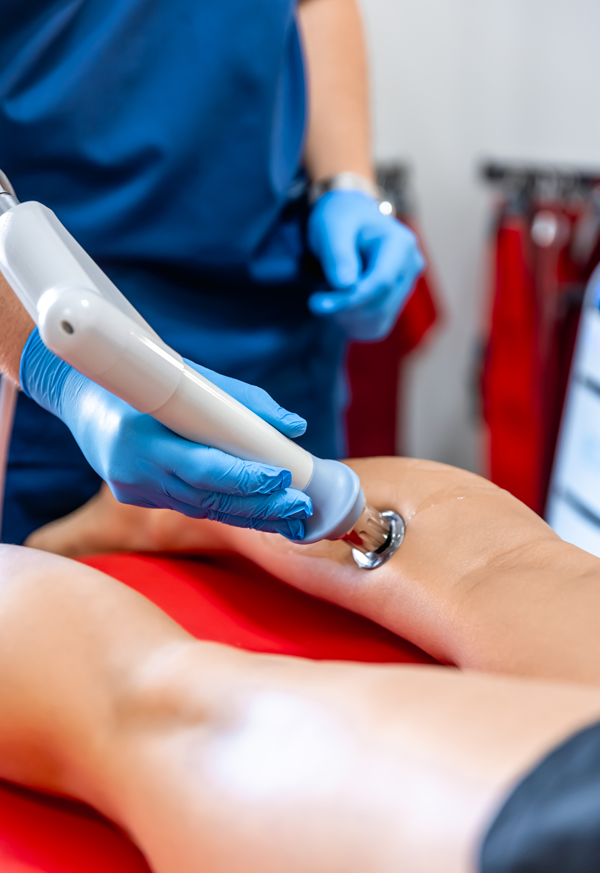PHYSIOTHERAPY
At Ringwood and Doncaster Physiotherapy, we offer a range of services to help you recover and achieve your optimal health. From general physiotherapy and sports rehabilitation to specialized treatments for specific conditions, our experienced team is here to guide you through your recovery journey.
Manual Therapy or
Hands-on

“Hands-On” or manual therapy techniques, also referred to as musculoskeletal or manipulative therapy, encompass a variety of methods and maneuvers aimed at assessing and treating joint dysfunctions in the body. In Australia, much of the pioneering work that has had a global impact on manual therapy was developed. Geoff Maitland played a leading role in revolutionising and evolving these techniques within Australia. Additionally, Robin McKenzie made significant contributions to the field, particularly in mechanical treatments for spinal issues.
This system of assessment and treatment is applied to both the joints of the spine and peripheral joints, which include the joints of the limbs. Through skilled hands-on techniques, therapists can identify and address dysfunctions, aiming to restore optimal function and alleviate pain or discomfort.
In summary manuale therapy is a clinical approach to physical therapy that involves physical manipulation or mobilization using the hands to evaluate, diagnose, and treat soft tissue or joint injuries or conditions.
Manipulation
In the context of Musculoskeletal Physiotherapy, manipulation refers to a short, high-velocity movement of a spinal joint, often accompanied by a sensation of ‘click’ or ‘pop’. This technique aims to alleviate stiffness and release joints that may have become locked due to injury and subsequent muscle spasm. Prior to its application, the patient’s informed consent is essential, and safety testing is routinely conducted as part of the procedure. The use of manipulation can result in remarkable benefits for the patient. While it may be recommended for your condition, alternatives are available should you have any apprehensions.
Other Techniques
Passive mobilization
involves gently applying small movements to a joint, ranging from gentle to firm pressure, with the goal of enhancing range of motion and alleviating pain. This technique is effective in addressing pain originating from deeper joint structures and can also help ease spasms and discomfort in the soft tissues surrounding the joint.
Stretching
is indeed a vital component of physical fitness and injury prevention. Sustained stretches involve holding a particular position for a period, allowing the muscles to gradually lengthen. Contract-relax stretches, or PNF stretches, take it a step further by involving contraction of the muscle before stretching it further, which can help achieve a deeper stretch. These techniques are particularly beneficial for muscles like the trapezius, gluteals, hip flexors, and hamstrings, which can often become tight due to various activities or prolonged periods of sitting. Incorporating stretching into your routine can improve flexibility, range of motion, and overall muscle health.
Manual traction
is a technique that involves applying controlled force with the hands to stretch a joint, thereby increasing the space within the joint. This method is often used in the neck region to alleviate pressure on the spinal discs and nerves. Additionally, it can be applied to peripheral joints such as the shoulder, elbow, wrist, hand, hip, ankle, and foot to relieve stiffness, improve mobility, and reduce pain. Manual traction is typically performed by trained professionals such as physiotherapists and may be part of a comprehensive treatment plan for conditions like neck or joint pain, disc herniation, or nerve compression.


Sports Physiotherapy

Sports physiotherapy services are comprehensive and tailored to the unique needs of athletes and sports enthusiasts. The fact that our physiotherapists have experience across a wide range of sports and sports-related injuries speaks of their expertise in this area.
Clinic’s approach of implementing various physiotherapy intervention techniques demonstrates our commitment to providing holistic care, focusing not only on rehabilitation but also on injury prevention. Understanding the physical demands and stress that sports can place on the body is crucial in effectively treating and preventing injuries, and our expert Physiotherapists recognizes and addresses this aspect.
By combining their knowledge of sports-specific injuries with their expertise in physiotherapy, our team can help patients recover from injuries, improve their performance, and minimize the risk of future injuries. This comprehensive approach to sports physiotherapy can greatly benefit athletes of all levels, from recreational to professional, enabling them to stay healthy, active, and competitive in their chosen sports.
Dry Needling
Dry needling is a technique that involves the insertion of acupuncture needles into specific points in the body to address musculoskeletal issues. Although it utilises acupuncture needles, it’s distinct from traditional Chinese acupuncture, as it operates within the framework of Western medicine’s understanding of anatomy and physiology.
Physiotherapists often incorporate dry needling into their treatment plans, but it’s crucial to obtain informed consent from the patient before proceeding. Some common applications include:
Trigger point release:
Dry needling can effectively target and release trigger points, which are hyperirritable spots within taut bands of skeletal muscle. This is particularly beneficial for muscles prone to tightness, such as the trapezius, rotator cuff, spinal muscles, gluteals, hip flexors, hamstrings, and calf muscles.
Tendon pathology:
In cases of tendinopathy, dry needling is believed to promote the release of blood and cell products that can stimulate a healing response. It may help alleviate pain and improve function in conditions like tennis elbow.
Bursitis:
Needling can help alleviate swelling and pressure within the bursa, the fluid-filled sacs that cushion joints. By reducing inflammation and enhancing circulation, dry needling may contribute to pain
Electrotherapy
Incorporates various technologies and techniques aimed at aiding the healing process and relieving pain, the following is often used at discretion of the practitioner

Ultrasound Therapy
This technique employs high-frequency sound waves to generate vibrations and warmth within tissues, which can accelerate the healing process. Ultrasound therapy is particularly effective in stimulating fracture repair when used in low-dose pulsed mode. The vibrations and warmth generated by ultrasound can enhance circulation, promote tissue relaxation, and potentially aid in the breakdown of scar tissue.

Interferential Therapy
Interferential therapy utilizes low-frequency electrical impulses to stimulate the nervous system. By inducing therapeutic twitching contractions in muscle tissue, it can help increase blood flow, reduce swelling, and alleviate pain and muscle spasms. Additionally, interferential therapy has been shown to soothe nerves carrying pain messages and trigger the release of endorphins, the body’s natural pain-relieving chemicals, into the central nervous system.

Intermittent compression Therapy
This device is used to relieve edema and promote healing, it is recommended to treat the following conditions
- Lymphedema
- Post ankle & knee surgery
- Soft tissue damage
- Achilles tendonitis
Exercise program
Recurrence of injury will drastically reduce with implementation of an exercise program. At Ringwood Physiotherapy, we offer manageable exercise programs tailored to patient conditions. This is usually recommended in discretion of the practitioner and whether they believe its implementation will improve patient conditions.
Hand therapy
Hand therapy is a specialized form of rehabilitation focused on treating conditions affecting the hand, wrist, and forearm. Whether recovering from surgery, injury, or managing chronic conditions like arthritis, our expert physiotherapists use a combination of hands-on techniques, exercise programs, and splinting to restore strength, mobility, and function. Our goal is to help you regain confidence in everyday activities, from gripping objects to fine motor tasks. With tailored treatment plans, we support your recovery and long-term hand health.


Extracorporeal Shockwave Therapy (ESWT)
Commonly referred to as Shockwave Therapy or Radial Shockwave Therapy, is a non-invasive medical treatment used to address various chronic musculoskeletal conditions. Originally developed to treat kidney stones, ESWT has since been adapted for treating conditions such as Plantar Fasciitis and Achilles Tendinopathy.
During ESWT, high-energy acoustic waves are directed at the affected area of the body. These shockwaves penetrate the skin and target the underlying tissue, where they induce microtrauma and initiate the body’s natural healing response. This process can help stimulate blood flow, promote tissue regeneration, and break down scar tissue, ultimately alleviating pain and improving function.
ESWT is particularly beneficial for chronic conditions that have been resistant to other forms of treatment, such as rest, manual therapy, or medication. By providing a non-invasive alternative to surgery, ESWT offers patients a potentially effective option for managing their symptoms and improving their quality of life.
It’s important to note that while ESWT has shown promising results for many patients, its efficacy can vary depending on factors such as the specific condition being treated, the severity of symptoms, and individual patient characteristics. As with any medical intervention, it’s essential for patients to discuss the potential benefits and risks of ESWT with their healthcare provider to determine if it’s an appropriate treatment option for their condition.
Rehabilitation
Pre and post-operative rehabilitation programs are integral components of the treatment process for individuals undergoing surgical procedures. Physiotherapists play a crucial role in facilitating recovery and restoring optimal function both before and after surgery. Here’s how they contribute to the rehabilitation process:
Pre-operative Rehabilitation:
Pre-operative physiotherapy aims to optimize the patient’s physical condition and functional capacity before surgery. By addressing pre-existing impairments, such as muscle weakness, joint stiffness, or movement limitations, physiotherapists can help prepare patients for the upcoming procedure and improve their post-operative outcomes. Pre-operative rehabilitation may include exercises to improve strength, flexibility, and cardiovascular fitness, as well as education on post-operative precautions and expectations.
Post-operative Rehabilitation:
Following surgery, physiotherapy plays a vital role in promoting recovery, reducing pain, and restoring function. Post-operative rehabilitation programs are tailored to the specific needs of each patient based on the type of surgery performed, the extent of tissue trauma, and individual factors such as age, fitness level, and comorbidities. Physiotherapists use various techniques, including manual therapy, therapeutic exercises, modalities such as electrotherapy or ultrasound, and functional training to facilitate healing, improve mobility, and enhance overall function. The goals of post-operative rehabilitation may include restoring range of motion, reducing swelling and inflammation, strengthening muscles, improving proprioception and balance, and facilitating a safe return to daily activities and sports.
Early Intervention:
Initiating physiotherapy as soon as possible after surgery is essential for maximising the benefits of rehabilitation and minimising complications. Early intervention helps prevent muscle atrophy, joint stiffness, and functional decline, promoting faster recovery and facilitating a smoother transition to independence. Physiotherapists work closely with patients to develop individualized treatment plans and monitor progress closely throughout the recovery process. By providing personalized guidance, support, and encouragement, physiotherapists empower patients to take an active role in their rehabilitation journey and achieve their rehabilitation goals.
Reduced Postoperative Care:
Effective pre- and post-operative rehabilitation can help optimise surgical outcomes and may enable some patients to reduce the duration or intensity of their postoperative care. By promoting faster recovery, improving functional outcomes, and minimizing complications, physiotherapy interventions contribute to a more efficient and comfortable recovery experience for patients undergoing surgery.
Overall, pre- and post-operative rehabilitation programs led by physiotherapists are essential components of comprehensive surgical care, helping patients achieve optimal recovery, restore movement and function, and enhance their quality of life.
